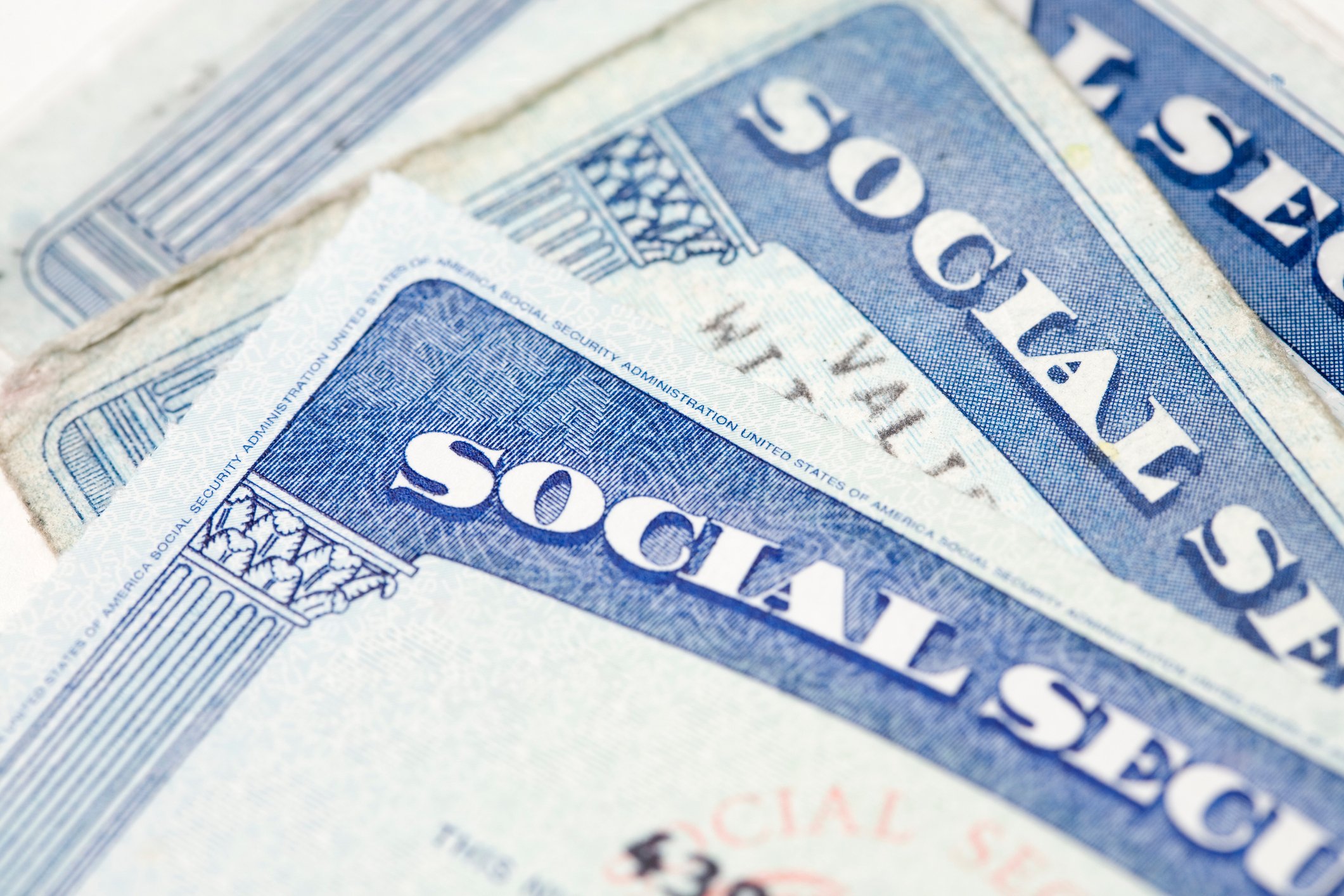Are you nearing retirement within the next 10 years? Then there's a pretty good chance Social Security is going to play a role in helping you make ends meet during retirement. According to a recently released poll from Gallup, 84% of non-retired workers expect Social Security to be either a major source (30%) or minor source (54%) of income once they hang up their work gloves for good.
Yet, in spite of its significance, knowledge of America's most important social program is usually lacking. Case in point: MassMutual recently gave an online five-question, true-or-false Social Security quiz to seniors aged 50 and over, and it found that 47% failed to get a passing grade of at least four questions correct. Put plainly, we just don't understand Social Security all that well.

Image source: Getty Images.
With that being said, if you're on the cusp of retirement, or are still working and nearing the Social Security eligibility age to receive benefits (62), here are seven things you should know:
1. Social Security is only designed to replace an average of 40% of your working wages
To begin with, it's important to understand that Social Security was never designed to be a primary source of income during retirement. The Social Security Administration (SSA) suggests that the average retired workers will see the program replace about 40% of their working wages, with the percentage perhaps a bit higher for lower-income workers, and lower for more well-to-do individuals. In other words, you're expected to save and invest for your future, with Social Security simply bolstering your financial foundation.

Image source: Getty Images.
2. Your claiming age is the biggest X factor in determining your monthly payout
Though there are actually seven factors that can affect what you'll receive (in net) from Social Security, there are four primary factors that go into determining your payout. The first two -- your work history and earnings history -- are joined at the hip. The SSA will take into account your 35 highest-earning, inflation-adjusted years when calculating your benefit at full retirement age. Essentially, it means you should work a minimum of 35 years, if not more, and earn as much as you can in the years you do work, to maximize what you'll receive from the program.
The third factor is your birth year, which is what determines your full retirement age, or the age at which you become eligible to receive 100% of your benefit. Claiming at any point before this age means accepting less than your full benefit. On the other hand, claiming benefits after this age could mean an even larger payout.
However, the real X factor here is your claiming age. You're able to begin receiving Social Security retired-worker benefits at age 62, or any point thereafter. The catch is that for each year you hold off, your eventual payout grows by approximately 8%, up until age 70. All other factors (earnings, work history, and birth year) being equal, a person claiming at age 70 can earn up to 76% more per month than a person claiming at age 62.

Image source: Getty Images.
3. There is no perfect claiming age
Now here's the kicker: There is no perfect claiming age or concrete formula that guarantees you'll get the most out of Social Security. Because we don't know our expiration date, we'll never know for certain if we've made the best possible decision to get the most out of Social Security over our lifetime.
However, there are some guidelines to consider that could lead us to make a more educated claiming decision. For instance, if you have a chronic health condition or are otherwise not in the best of health, are a lower-earning spouse, or are struggling to find work and have no other source of income, claiming Social Security benefits earlier rather than later might make sense. Even though you're accepting a permanent reduction in benefits by claiming before your full retirement age, these scenarios could result in your netting more from Social Security than if you had waited a few more years before signing up.
Meanwhile, if you're in good or excellent health, a significantly higher-earning spouse, or have very little saved for retirement and would otherwise be very reliant on Social Security for your monthly income, then waiting could be the smartest choice since it would boost your monthly payout.

Image source: Getty Images.
4. You're probably going to owe federal tax on a portion of your benefits
Don't shoot the messenger, but also keep in mind that there's a better than 50-50 chance that you're going to owe some federal income tax on you Social Security benefits.
Back in 1983, Congress passed a series of amendments to Social Security that, among other things, included the introduction of a tax on Social Security benefits over a certain income threshold. If one-half of your Social Security payout, plus your wage income, totaled above $25,000 for an individual taxpayer or $32,000 for a couple filing jointly, half of your benefits could be taxed at the ordinary income rate. In 1993, a second tier was added allowing 85% of benefits to be taxed for individuals and couples earning above $34,000 and $44,000, respectively.
Here's the problem: These income thresholds have never been adjusted for inflation. That means the lower and upper tax tiers have been left unchanged for a respective 35 and 25 years. As a result, a tax that was once targeted at well-to-do households now impacts 56% of senior households, according to The Senior Citizens League.

Image source: Getty Images.
5. A pretty large benefit cut could be on the horizon
Again, don't shoot the messenger, but the latest annual Social Security Board of Trustees report estimates that the program will have exhausted its $2.9 trillion in asset reserves by 2034. That's because of a combination of factors that include the ongoing retirement of baby boomers, which is dragging down the worker-to-beneficiary ratio; increased longevity; growing income inequality, and congressional inaction.
With the drawdown of Social Security's excess cash beginning this year, the evidence is obvious that the current payout schedule isn't sustainable. The Trustees report has projected that an across-the-board cut in benefits of up to 21% might be needed by 2034 to keep the program solvent, without any additional benefit cuts, until 2092.
In short, your payout could take a big hit within the next two decades, which is worth considering when deciding at what age you should claim benefits.

Image source: Getty Images.
6. Social Security isn't in danger of going bankrupt
Now, there is a silver lining to all of this. Before you start panicking about Social Security's well-documented problems, you should also understand that there's virtually no chance the program is going bankrupt.
Even without its asset reserves, it'll have plenty of revenue flowing in that it can disburse to eligible beneficiaries. Social Security's 12.4% payroll tax on wage income of up to $128,400 (as of 2018) was responsible for 87.7% of the nearly $1 trillion the program collected in revenue last year. As long as Americans keep working, and Congress leaves Social Security's primary funding mechanism as-is, the program can't go bankrupt.

Image source: Getty Images.
7. Your benefits are likely to lose purchasing power over time
Finally, pre-retirees should be aware that their Social Security benefits are likely to lose purchasing power over time, marking yet another reason Social Security shouldn't be your primary or only source of income.
A newly released analysis by The Senior Citizens League found that benefits have been reduced by 34% since 2000. In essence, the annual cost-of-living adjustments being passed along to beneficiaries each year is in no way keeping pace with the inflation they're facing from other factors, such as medical care and housing.
At the heart of this inflation issue is the use of the Consumer Price Index for Urban Wage Earners and Clerical Workers (CPI-W) as the program's inflationary tether. The CPI-W is geared to track the expenditures of working-age clerical and urban workers, not retired folks. As a result, it tends to underreport the medical and housing inflation that aged beneficiaries face, dooming them to subpar cost-of-living adjustments.
The more you understand about Social Security, the better chance you have of making a smart claiming decision.





